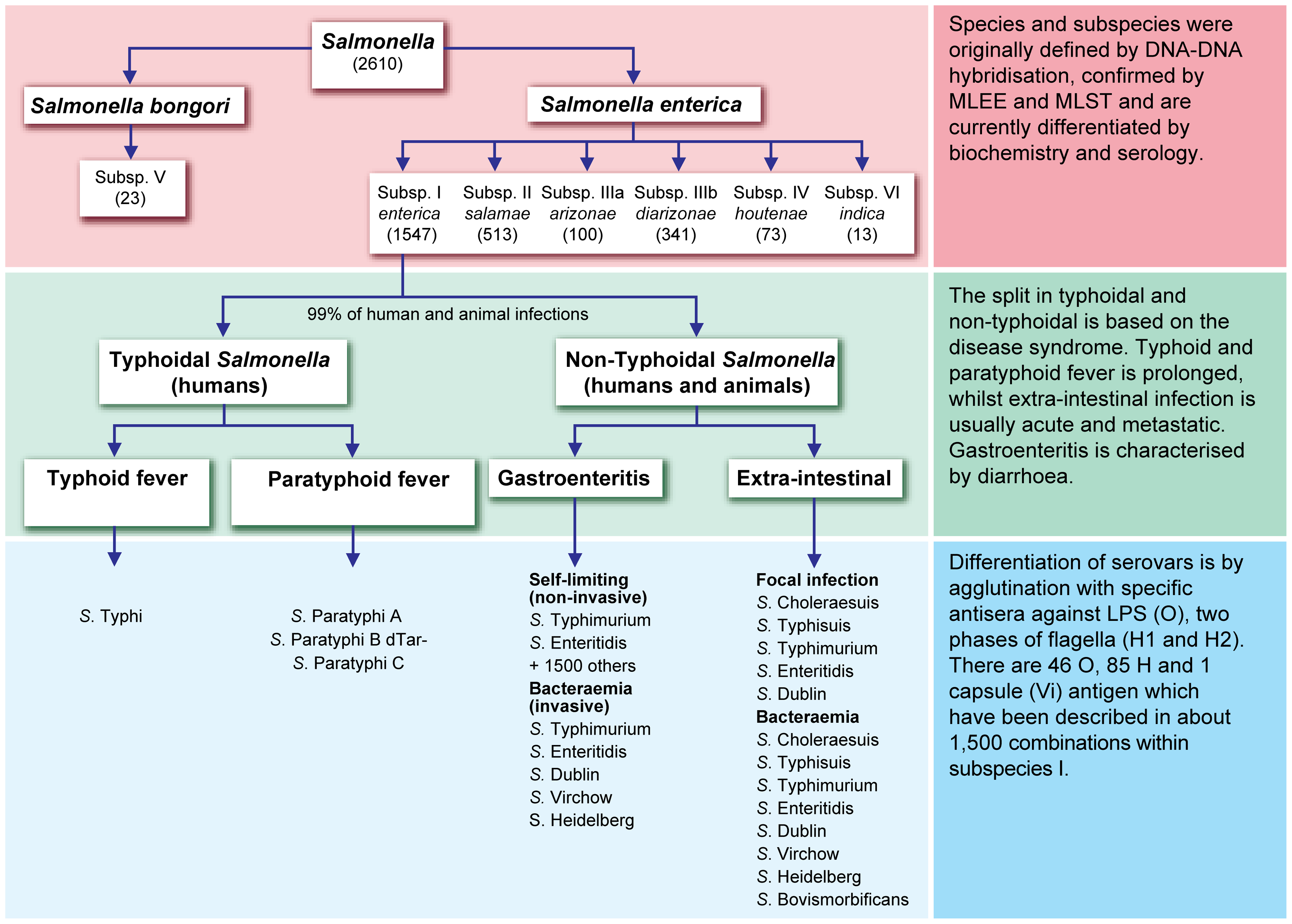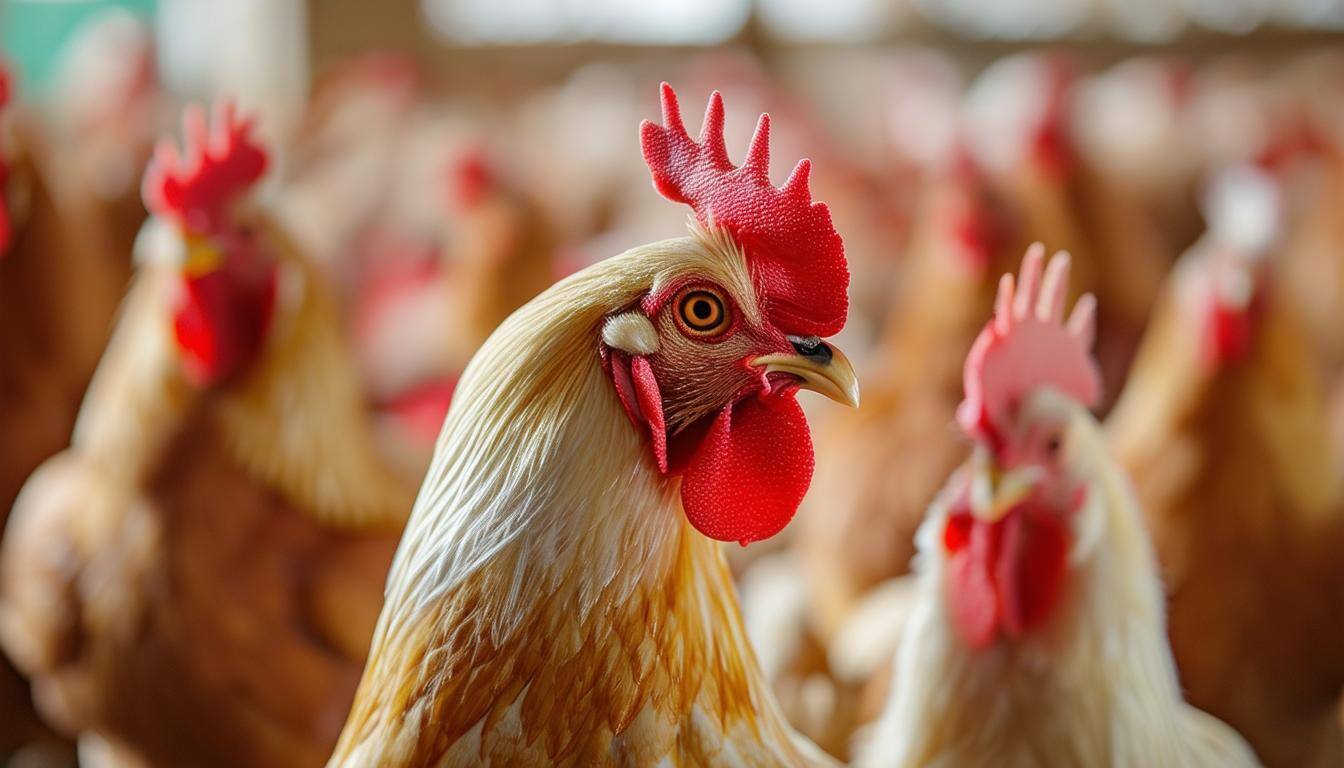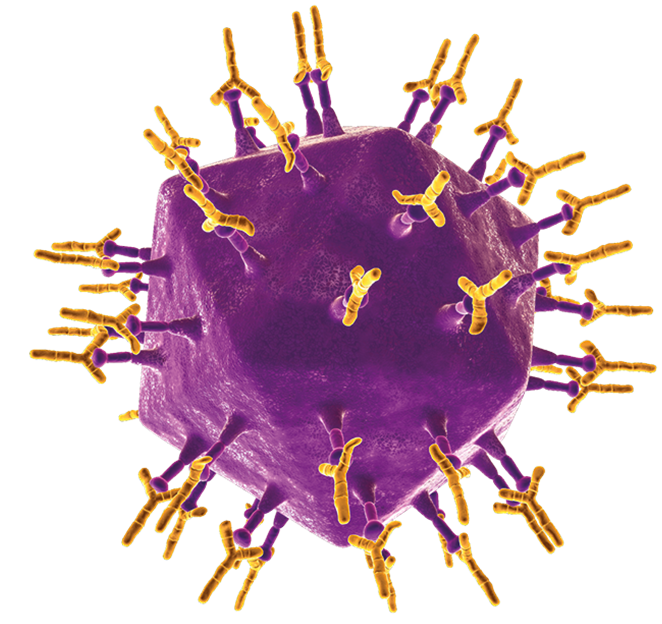Salmonella in Poultry
Jaime Sarabia & Pascal Paulet, Ceva
12 décembre 2025
Read it in minutes
Introduction
Salmonellosis is one of the most prevalent zoonotic diseases of humans and animals in the world.
In 2022 Salmonellosis was the second most reported zoonotic disease in the EU, affecting 65,208 people, a 5039 increase in the absolute cases compared to previous year. See the latest annual European Union One Health 2022 zoonoses report by EFSA and ECDC.
Since many milder cases are not diagnosed or reported, the actual number of infections may be over thirty times higher.
While all serotypes can cause disease in humans, a few are host-specific and can reside in only one or a few animal species. The most important serovars found in the reported cases are Salmonella Enteritidis (SE) and Salmonella Typhimurium (ST), both of which are often linked back to poultry products.
Eggs and egg products are one of the most important primary sources of Salmonella foodborne outbreaks confirmed. The Poultry and Egg industry has been putting tremendous efforts to lower the incidence of Salmonella, and they have been successful, but the incidence of illnesses linked to contaminated poultry has not decreased at the same rate.
These reported human casualties caused by that human Salmonellosis represents a huge economic burden that the European Food Safety agency has estimated as high as 3 billion Euro a year.
Salmonella as a zoonosis pathogen is part of the One Health concept consisting of control of animal pathogens to lower human disease risk. Control of zoonotic Salmonella remains a major concern of poultry industry all other the world to prevent consumers cases and to protect their brands.
-
 © brianna-tucker
© brianna-tucker
Aetiology - Non-Typhoidal Salmonella
Paratyphoideal Salmonellae (SE, ST) are peritrichously flagellated and motile, although naturally occurring nonmotile mutants are occasionally encountered.
The most common Salmonella serovars that cause infections in humans and food animals belong to subspecies enterica.
In subsespecie enterica we have typhoidal salmonella causing clinical signs in birds and non-typhoidal Salmonellae causing clinical signs in humans.
Achtman et al 2012.
- Gallinarum and S. Gallinarum biovar pullorum are the two species adapted specifically to birds, causing fowl typhoid and pullorum disease, respectively.

The rest of Salmonella that can infect birds are known as paratyphoid, or not adapted to host. Among these Salmonella should highlight those that are subject to official control in European Union, being responsible for causing the higher number of infections in humans: S. Enteritidis, Typhimurium, Infantis, Hadar, Virchow...
Transmission and Clinical Signs
The disease can be transmitted horizontally as well as vertically.
Horizontal transmission can occur directly through contact with infected birds or indirectly through vectors such as rodents, wild birds, humans, and contaminated equipment. The risk of outbreak increases significantly when biosecurity measures are lax, allowing Salmonella to spread rapidly among densely packed birds. In addition, contaminated feed and water can serve as indirect sources of infection, further exacerbating the spread of the disease in poultry farms.
Vertical transmission occurs either through shell contamination during the egg-laying process or internal transovarian contamination of the yolk. This type of transmission is particularly concerning as some Salmonella strains, like S. Enteritidis, can colonize the reproductive organs of chickens. When infected hens lay eggs, they can pass the bacteria to the next generation, leading to infected chicks from the moment they hatch. Consequently, vertical transmission poses a significant challenge for poultry breeders and hatcheries.
In poultry, the disease often goes unnoticed except in young birds where symptoms are more evident. These symptoms include depression, poor growth, weakness, diarrhea, and dehydration. In exceptional cases, the impact of the infection on young birds can be devastating, as it impairs their development and increases mortality rates.
The clinical signs of Salmonella infection in birds can vary depending on the serovar and the age of the birds.
While adult birds may be asymptomatic carriers, young chicks are particularly vulnerable and may exhibit more severe clinical signs. In severe cases, the infection can lead to peritonitis, septicemia, and death. The presence of asymptomatic carriers within a flock complicates control efforts, as these birds can shed the bacteria intermittently, contaminating the environment and perpetuating the cycle of infection.
Furthermore, the stress factors in poultry farming, such as overcrowding, poor ventilation, and suboptimal nutrition, can exacerbate the severity of the infection. Stress weakens the immune system of birds, making them more susceptible to Salmonella infection and increasing the likelihood of disease outbreaks.
Therefore, implementing good management practices is crucial in minimizing stress and reducing the risk of infection.
Biosecurity measures play a pivotal role in preventing and controlling Salmonella outbreaks in poultry farms. These measures include strict hygiene protocols, regular disinfection of facilities, pest control, and monitoring of feed and water quality. Ensuring that birds are sourced from Salmonella-free breeders and conducting routine testing for Salmonella in flocks reduce the risk of introduction and spread of the pathogen. Additionally, vaccination programs targeting specific Salmonella serovars can help enhance the immunity of birds and reduce the prevalence of infection.
In summary, the transmission of Salmonella in poultry can occur through both horizontal and vertical routes, posing a significant threat to the health of birds and the economic viability of poultry operations. Understanding the mechanisms of transmission and implementing comprehensive biosecurity measures are essential steps in controlling and preventing Salmonella infections. The poultry industry must remain vigilant and proactive in addressing this ongoing challenge to safeguard both animal and human health.
Diagnosis and Treatment of Salmonella
Currently, there are different diagnostic methods:
- Causal agent identification: Culture and bacterial isolation. This is the most common diagnostic method and involves growing Salmonella from samples in a laboratory setting to confirm the presence of the bacteria.
- Serological techniques (ELISA, PAT): These methods detect antibodies against Salmonella in the blood. Although useful, they are not highly reliable due to cross-reactivity and other factors.
- PCR techniques (Polymerase chain reaction): This molecular technique amplifies Salmonella DNA from samples, providing a highly specific and sensitive method for detecting the bacteria.
In cases of Salmonella infection, it is necessary to sample internal organs (liver, caeca), the reproductive and intestinal tracts, or fecal material. From these samples, bacterial isolation and identification can be carried out by culturing the tissues in appropriate media.
-
© Ceva Santé Animale
There is some controversy about the control or prevention of Salmonella using antibiotics. Due to the nature of Salmonella infection, continuous antibiotic treatments may not only have limited efficacy in poultry operations, but may also lead to the emergence of antibiotic resistance, impacting human health with the dissemination of multi-resistant strains.
In addition to antibiotics, other treatments and preventive measures can be considered to improve intestinal health. These include the use of prebiotics, probiotics, postbiotics, and phytobiotics to achieve optimal intestinal health. These substances can help maintain a healthy gut flora, which can act as a barrier to Salmonella colonization.
Vaccination is another crucial method for controlling Salmonella. Both live and inactivated vaccines can be used to lower the replication and transmission of the disease. The use of live vaccines is well documented to:
- Reduce the colonization of internal organs, the intestine, and tissues of the reproductive system.
- Enhance the immune response of birds, providing better protection against infection.
Moreover, biosecurity measures play a pivotal role in preventing and controlling Salmonella outbreaks in poultry farms. These measures include strict hygiene protocols, regular disinfection of facilities, pest control, and monitoring of feed and water quality. Ensuring that birds are sourced from Salmonella-free breeders and conducting routine testing for Salmonella in flocks can significantly reduce the risk of introduction and spread of the pathogen.
Implementing these comprehensive strategies—diagnosis, treatment, and preventive measures—can help mitigate the impact of Salmonella infections in poultry, safeguarding both animal and human health.
Prevention and Control
The control of Salmonella must be a holistic approach based on the following key points:
- Only disease-free animals allowed on farms.
- Strict biosecurity rules (control measures for vectors).
- Testing of raw materials (feed).
- Environmental testing. Generally, in commercial poultry operations, a periodic monitoring of faeces or litter is carried out. Samples are analysed by microbiological culture and isolation. In addition to litter or faeces samples, egg tapes, dust, vectors, eggshell or internal organs can also be monitored.
- Usage of prebiotics, probiotics, postbiotics, and phytobioticachieve the best intestinal health.
- Vaccination. Live and inactivated vaccines can be used to lower replication & transmission of the disease.
By protecting flocks against common Salmonella serovars like Salmonella enteritidis (SE) and Salmonella typhimurium (ST), vaccination helps prevent foodborne illnesses, which is essential for public health and the reputation of poultry producers.
-
The use of live vaccines is well documented to:
- Reduce colonization of internal organs, intestine and tissues of the reproductive system.
- Reduce faecal shedding, ovarian transmission, and contamination of eggs and the environment.
- Reduce the number of carrier birds and the prevalence within the flock or poultry operation.
-
 © Ceva Santé Animale
© Ceva Santé Animale
Conclusion
The importance of controlling non typhoidal Salmonella in poultry is critical in order to:
- Prevent illness of human being though food contamination & being part of One Health responsibility of poultry producers
- Worldwide increased regulation for the control of Salmonella such as in the EU and USA with:
- Increased export regulations and barriers, making control of Salmonella vital for broiler integrators exporting broiler meat.
- Negative economic impact on positive flocks, as according to local regulations, the breeder flocks should be depleted and for layer hens either the flock should be depleted or eggs sent for heat treatment with a lower economical value.
- Protection of eggs & poultry meat producer brands from Salmonella contamination of their product & damage to their customers.
- Implementation of Salmonella control in the production through biosecurity measures and usage of vaccines like Cevac Salmovac is critical for the companies to achieve their social responsibilities engagement and protect the future of their company.
About the authors

Jaime Sarabia Fragoso, DVM - Global Veterinary Services Manager at Ceva Santé Animale

Pascal Paulet, DVM - Global Poultry Marketing Director at Ceva Santé Animal
Subscribe now
Be notified when we publish a new blog!






